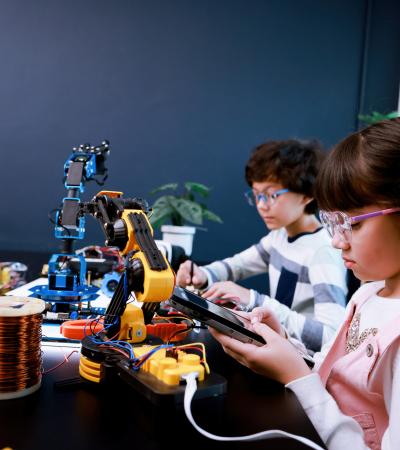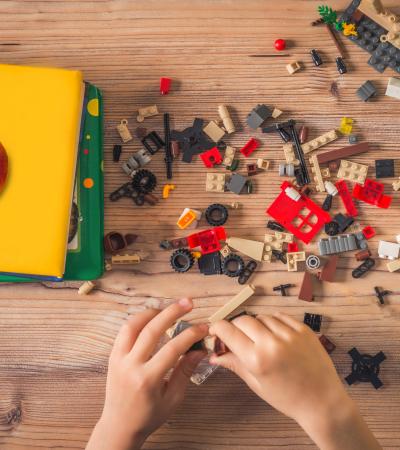Science @ Home! is a weekly program that demonstrates simple science projects with everyday objects that children can do at home, combined with an explanation of how the science behind the project works. The program debuted on April 6, 2020, and is tentatively scheduled to run through the end of August.
The idea for Science @ Home! came just after the library closed to the public. Staff had filmed a couple of virtual storytimes the day before staff was sent home, so we had about a week of virtual programs ready.
I thought it might be fun to do a simple science project and have staff post it to our Facebook page, so we tried it. The initial response was positive, so we decided to make it a series.
Advanced Planning
Advance planning involves deciding which experiment to showcase for the week, making sure I have supplies, and ensuring that I understand the science behind the project well enough to explain it to a child.
On filming day, I gather my supplies and set up in my garage. I record a brief introduction, show the supplies needed, record the experiment step by step, then show the results and explain why it worked and the science behind the project.
Once filming is done, I upload the video to my computer and edit it using iMovie, then I upload it to my work Google Drive and share it with my social media staff. They upload it to Facebook for the program’s Monday time slot.
Marketing
The program is marketed on the branch Facebook page and Instagram feed, as well as on LAPL’s online Calendar of Events. Other LAPL branches also share the program on their social media pages.
Budgeting
There is no budget for the series, although I did spend about $75 for a phone mount for my camera tripod and a microphone. All other supplies and equipment were items that I have readily available at home.
Day-of-event Activity
Programs are pre-recorded and scheduled to be released in advance, so as long as Facebook works, there is no real activity on the day of the event.
Program Execution
Since the program is pre-recorded, there is no real-time interaction with viewers.
We had some difficulty uploading the first program; the resolution was off. It turns out the staff member who uploaded it was working with older technology and a very slow wifi connection, but other than that and some Facebook scheduling anomalies, the execution has been very smooth.
Advice
While you don’t need the extra equipment, I strongly recommend getting a tripod and phone mount. It makes filming much easier. For novice filmmakers who use Macs, I can’t recommend iMovie highly enough.
Before LAPL closed to the public, I had absolutely zero experience doing film editing. After two-plus months of working from home, I can now edit a four-to-seven minute video — including captions, music, and titles — in less than an hour.




